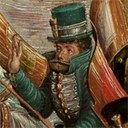0093 The Battle of Orsha – Court Propaganda or Chivalric Epic?
Identifiers (Article)
Identifiers (Files)
Abstract
The Battle of Orsha, part of the collection of the National Museum in Warsaw, an example of panel painting (1525–1535), is of paramount importance for the study of the military, as well as for the research in art history, material history, and the history of political and military elites of Central-Eastern Europe during the Renaissance. The article describes the ways Ruthenian and Lithuanian-Polish elites used material and intellectual products of chivalric culture, and tackles the problem of documentary and propagandist role of visual narrative. Since the publication of works by David Freedberg1 and Peter Burke2 the necessity to recreate the context of making, functioning, and reception of images has become evident. Daniel Arasse has further expanded methodological tools of this type of research3. However, there are still numerous artworks whose historical and social context has either remained untouched by research, or has been researched insufficiently. Repeatedly, it has led to misinterpretations of such artworks in spite of their major position in culture. The Battle of Orsha is a spectacular example of this process.
Statistics


License

This work is licensed under a Creative Commons Attribution-NonCommercial-NoDerivatives 4.0 International License.



